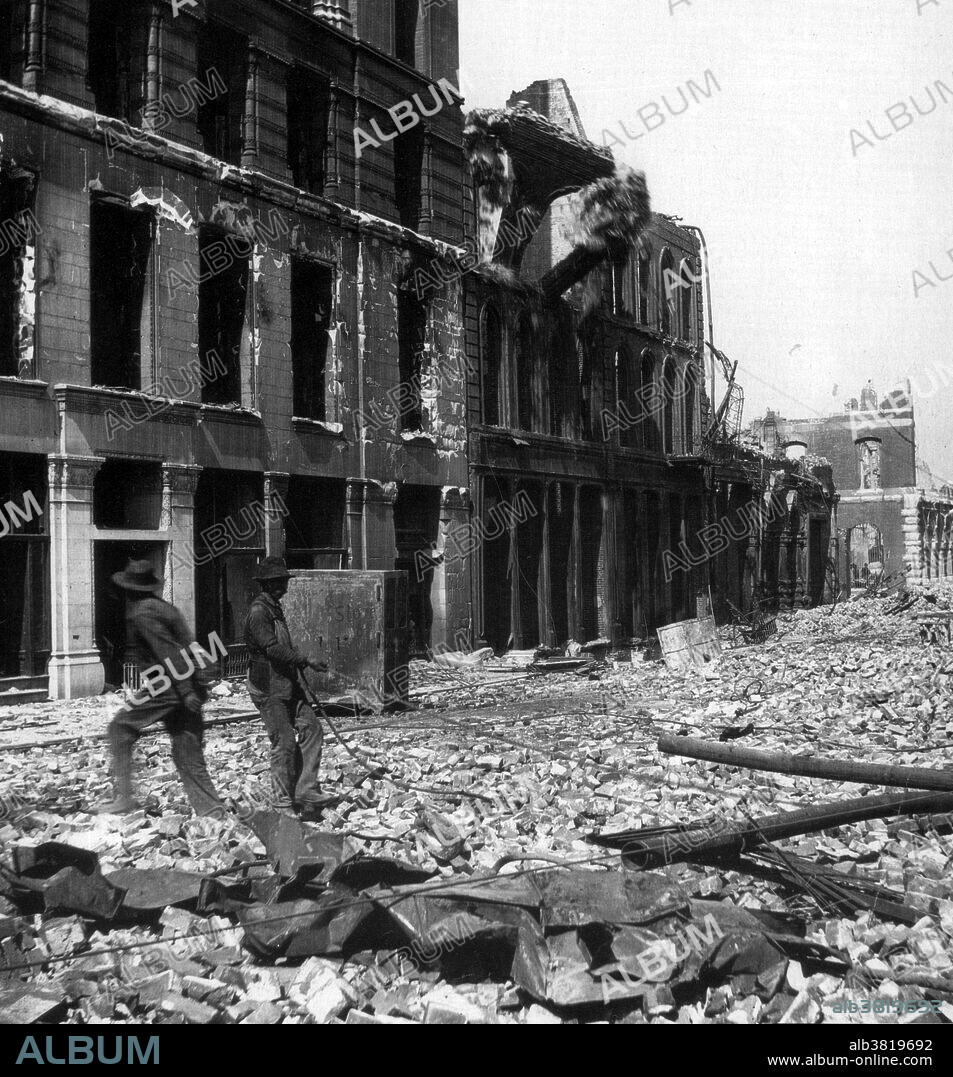alb3819692
Great Baltimore Fire, 1904

|
Zu einem anderen Lightbox hinzufügen |
|
Zu einem anderen Lightbox hinzufügen |



Haben Sie bereits ein Konto? Anmelden
Sie haben kein Konto? Registrieren
Dieses Bild kaufen

Titel:
Great Baltimore Fire, 1904
Untertitel:
Siehe automatische Übersetzung
The Great Baltimore Fire raged in Baltimore, Maryland, on Sunday, February 7, and Monday, February 8, 1904. Over 1,200 firefighters were required to bring the blaze under control. It destroyed a major part of central Baltimore with an estimated $85 million in property damages. The fire started in a dry goods warehouse and spread over 140 acres. While 2,500 buildings were consumed by flames, only one person was killed. One reason for the fire's duration was the lack of national standards in firefighting equipment. Although fire engines from nearby cities (such as Philadelphia and Washington, D.C. as well as units from New York City, Virginia, Wilmington, and Atlantic City) responded, many could not help because their hose couplings could not fit Baltimore's hydrants. Much of the destroyed area was rebuilt in relatively short order, and the city adopted a building code, stressing fireproof materials. The greatest legacy of the fire was the impetus it gave to efforts to standardize firefighting equipment in the United States, especially hose couplings. Originally captioned: Burned ruins of Baltimore, February 1908.
Bildnachweis:
Album / Science Source / New York Public Library
Freigaben (Releases):
Model: Nein - Eigentum: Nein
Rechtefragen?
Rechtefragen?
Bildgröße:
3837 x 4122 px | 45.3 MB
Druckgröße:
32.5 x 34.9 cm | 12.8 x 13.7 in (300 dpi)
Schlüsselwörter:
AMERIKANER • BERÜHMT • BERÜHMTE PERSÖNLICHKEIT • BESCHAEDIGUNG • BESCHÄDIGUNG • EREIGNIS • NOTABEL • PROMINENZ • SCHADEN • TRAGOEDIE • TRAGÖDIE • TRAUERSPIEL • VERWUESTUNG • VERWÜSTUNG • ZERSTOERUNG • ZERSTÖRUNG
 Pinterest
Pinterest Twitter
Twitter Facebook
Facebook Link kopieren
Link kopieren Email
Email
